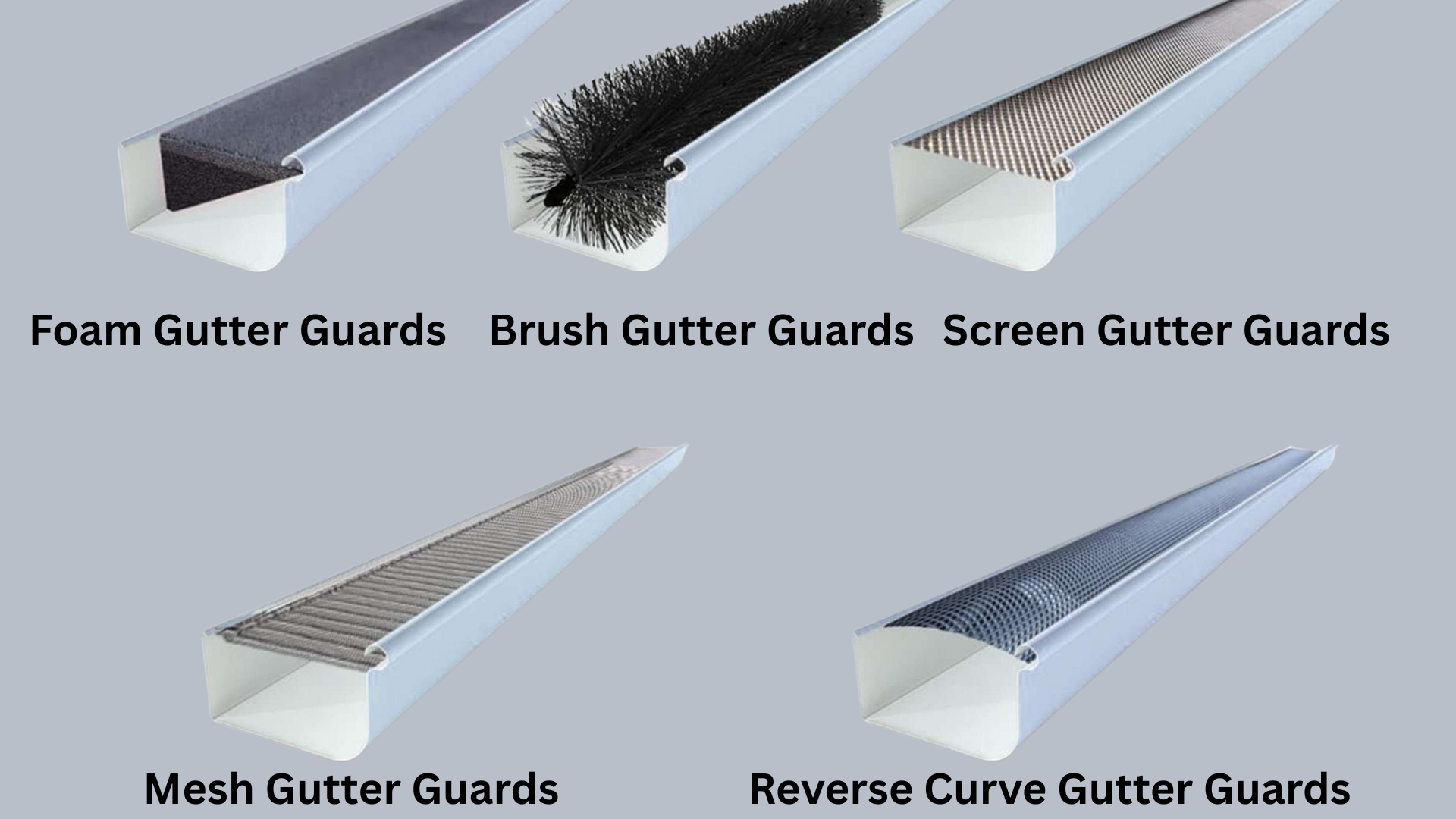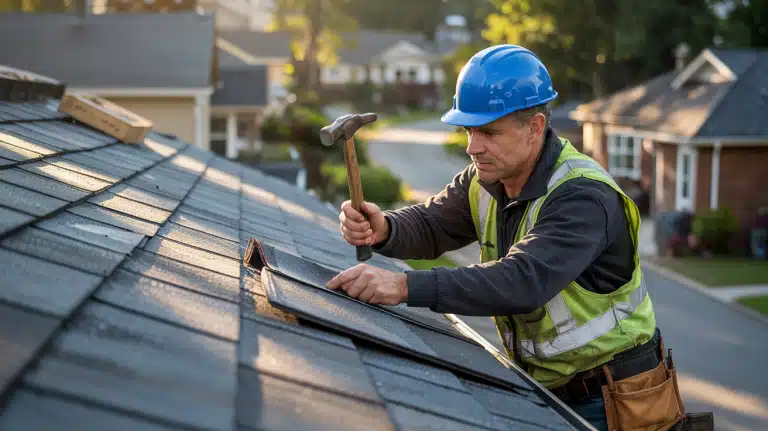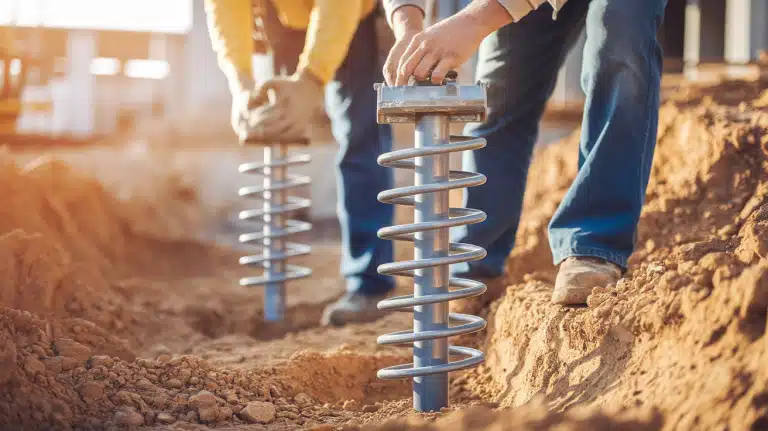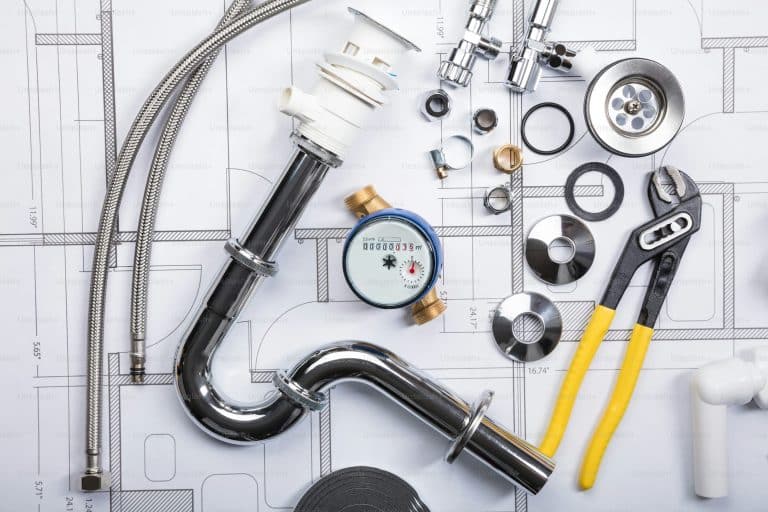Gutter Guard Types You Should Consider: A Quick Guide
Gutters without protection can become filled with leaves and twigs, blocking water flow and causing damage to your home. Gutter guards offer a simple fix to this common issue. Most homes need gutter cleaning twice a year, which takes time and effort.
With the right guards in place, you can cut this task down or even remove it from your to-do list. Guards stop clogs before they form.
In this guide, we’ll examine five main types of gutter guards: mesh, screen, foam, reverse curve, and brush. Each works differently and fits different needs.
We’ll also discuss how to choose the best one for your home based on your local weather, the trees near your house, and your budget.
What Are Gutter Guards, and Why Do You Need Them?
Gutter guards are covers that fit on top of or inside your home’s gutters. They act as filters to keep out unwanted items while allowing water to flow through. When rain hits your roof, it needs a clear path to move away from your home.
Without guards, gutters fill with leaves, sticks, and dirt, creating clogs that stop water from moving. Water then spills over the sides, harming your walls and the ground around your home. This can lead to wet basements, cracked walls, and soil washing away.
Gutter guards save you time by cutting down how often you need to clean gutters. Most homes need gutter cleaning twice a year. With guards, you might clean just once a year or less.
Guards also make gutters last longer. When gutters stay clean, they don’t get heavy with wet leaves, which prevents them from pulling away from your house or bending. Water flows better through clean gutters, keeping your home safe from water damage.
Choosing the Right Gutter Guard: 5 Popular Types Explained
Learn the 5 most common types of gutter guards and know how to choose the best one for your home based on your needs and preferences.
1. Mesh Gutter Guards
Mesh gutter guards use tiny holes in metal or plastic to keep leaves out while letting water in. These guards work well for homes with many trees nearby. They cost less than other options but still do a good job. You can use them in hot or cold areas without issues.
Key benefits:
- Stops most tree waste
- Fits most home gutters
- Lasts many years
- Works in all seasons
2. Screen Gutter Guards
Screen gutter guards have small wire grids that sit on top of your gutters. They catch tiny items like pine needles that can cause clogs. The cost sits in the middle range of all guard types. They hold up well during storms and bad weather.
Why homeowners choose screen guards:
- Stops small bits of tree waste
- Needs little cleaning
- Stands up to bad weather
- Can be put on by yourself
3. Foam Gutter Guards
Foam gutter guards are soft blocks that fill your gutter space. Water flows through the foam while leaves stay on top. They come at a lower price than other types. These work best in places with few storms and not too many trees.
What makes foam guards useful:
- Very easy to add to gutters
- Low cost for any home
- No tools are needed to set up
- Keeps out most leaves
4. Reverse Curve Gutter Guards
Reverse curve guards use a special bent shape to guide rain into gutters. Leaves and sticks slide right off the edge. These cost more than other types but last longer. They work very well in places with heavy rain and lots of trees.
Why reverse curve guards stand out:
- Very few clogs happen
- Almost no cleaning needed
- Handles heavy rain well
- Lasts for many years
5. Brush Gutter Guards
Brush guards look like big pipe cleaners that sit in your gutters. The bristles let water pass but trap leaves on top. They cost less than most options. These work well in areas with good weather and few trees.
Brush guard advantages:
- Quick to set up
- Easy to remove for cleaning
- Fits odd-shaped gutters
- Good for light leaf amounts
Gutter Guard Cost Guide: What to Expect
| Gutter Guard Type | Material Costs (per foot) | Professional Installation Costs | Maintenance Costs Over Time |
|---|---|---|---|
| Mesh | $1–$5 | $2–$3 per foot | Low (occasional cleaning) |
| Screen | $2–$6 | $3–$5 per foot | Low (occasional cleaning) |
| Foam | $1–$4 | $2–$4 per foot | Moderate (may require cleaning or replacement) |
| Reverse Curve | $7–$12 | $5–$10 per foot | Low to Moderate (requires occasional inspection and cleaning) |
| Brush | $1–$4 | $2–$3 per foot | Low (occasional cleaning) |
How to Choose the Right Gutter Guard for Your Home?
1. Climate and Weather Conditions in Your Area
Look at the weather where you live. If you get snow and ice, some guards work better than others. Metal mesh stands up well to cold, while foam may not last as long. In areas with lots of rain, you need guards that can handle high water flow quickly without backing up.
2. Type of Debris
Check what falls on your roof most often. If you have pine trees, fine mesh will catch tiny needles. Wider screens might work well for oak leaves and twigs. Homes with no trees nearby need less complex guards since they deal with less waste.
3. Budget and Cost Considerations
Set your spending limit before shopping. Basic screens cost less but might need more care. High-end systems cost more upfront but often need less work later. Think about both what you pay now and what you’ll spend on upkeep over time.
4. Ease of Installation
Some guards snap into place with no tools. Others need to be screwed down or even need roof work. If you like doing things yourself, look for simple snap-on guards. For more complex systems, hiring experts might save you time and stress.
5. Long-Term Maintenance Requirements
All guards need some care, but some need less than others. Brush guards need cleaning more often. Solid guards with curves might go years with no work. Think about how much time you want to spend on ladder work in the future.
Should You Install Gutter Guards? Pros and Cons
| Gutter Guard Type | Pros | Cons |
|---|---|---|
| Mesh | Prevents large debris, durable, low maintenance | Doesn’t block small debris, harder to clean |
| Screen | Affordable, easy to install, good for small debris | Requires frequent cleaning, can sag over time |
| Foam | Low cost, easy to install, blocks large debris | Not ideal for extreme temperatures; needs frequent cleaning |
| Reverse Curve | Excellent for heavy rain, minimal maintenance | High installation cost, not effective for small debris |
| Brush | Easy to install, cost-effective, good for light debris | Less effective for small debris; needs periodic cleaning |
Conclusion
Choosing the right gutter guard can make a big difference for your home’s health. We’ve examined five main types, each with its own strengths. Mesh guards work well for homes with many trees, while screen guards catch small debris like pine needles.
Foam guards offer easy setup at a low cost. Reverse curve guards need almost no cleaning but cost more. Brush guards fit odd-shaped gutters and install quickly.
When picking guards, think about your local weather, what falls on your roof, your budget, how hard they are to install, and how much care they need later. The best choice depends on your specific needs. Remember that even with guards, some checking is still good practice.
Look at your gutters once a year to make sure everything works as it should. Before buying, talk to local experts who know what works in your area.
The right guards will keep your gutters flowing freely, protect your home from water damage, and save you time on roof ladder work for years to come.
Frequently Asked Questions
1. Do Gutter Guards Completely Stop the Need for Cleaning?
No, they reduce cleaning needs, but all systems need some checking once a year.
2. Can I Install Gutter Guards Myself?
Yes, some types, like screens and foam inserts, are easy for DIY setup.
3. How Long Do Gutter Guards Last?
Most quality guards last 5-20 years, with metal types lasting longer than plastic or foam.
4. Will Gutter Guards Work During Heavy Rain?
Most guards handle normal rain well, but some types, like mesh and reverse curve, perform better in very heavy downpours.













